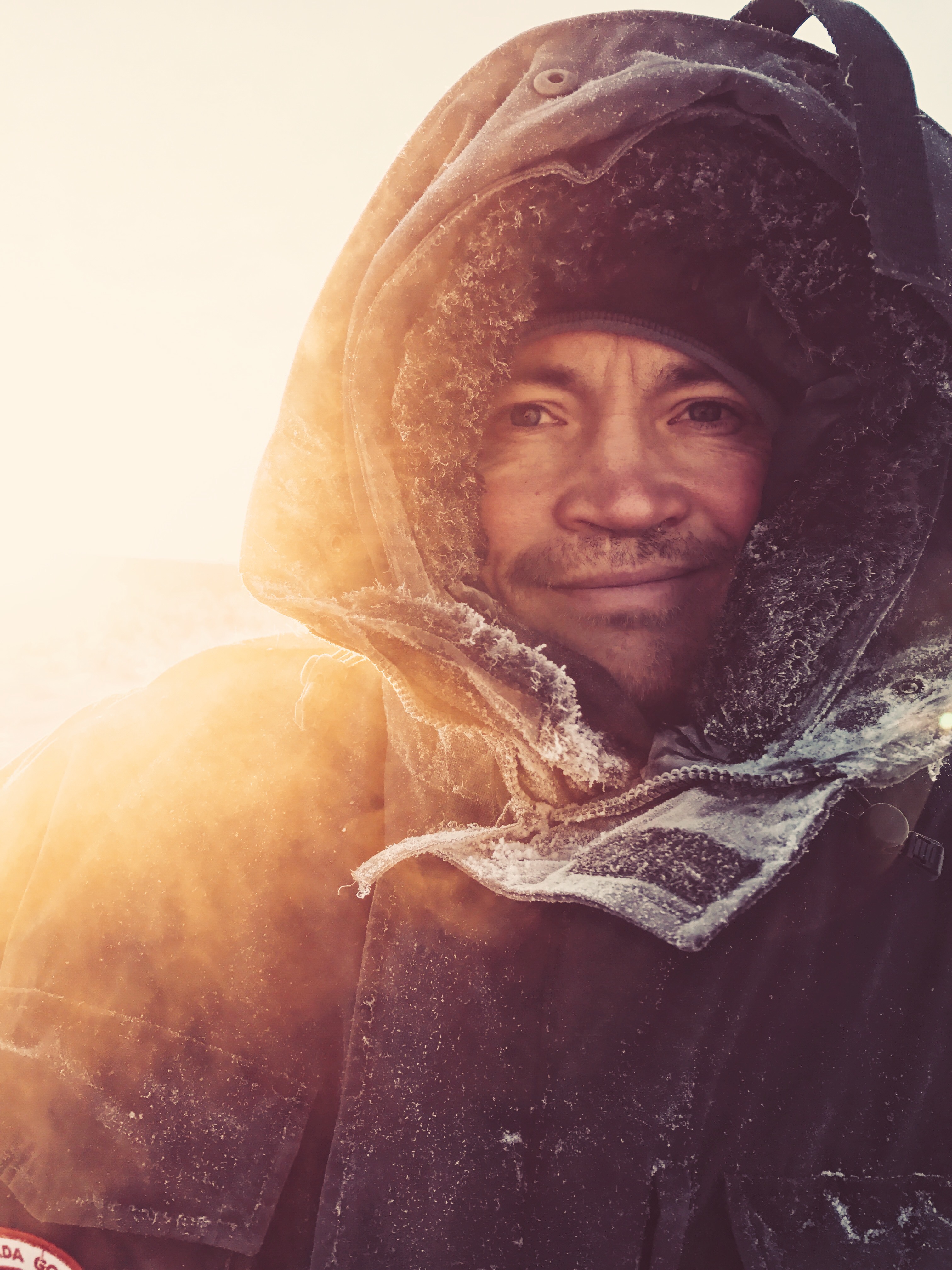A REINDEER HERDING YEAR – A year in the life of a reindeer herder
The reindeer herding year is a cycle based on season, weather and reindeer migration patterns. Every year is unique. In some years, unusual measures have to be taken. Old truths no longer apply in a changing climate and an environment that is constantly being challenged and reshaped.
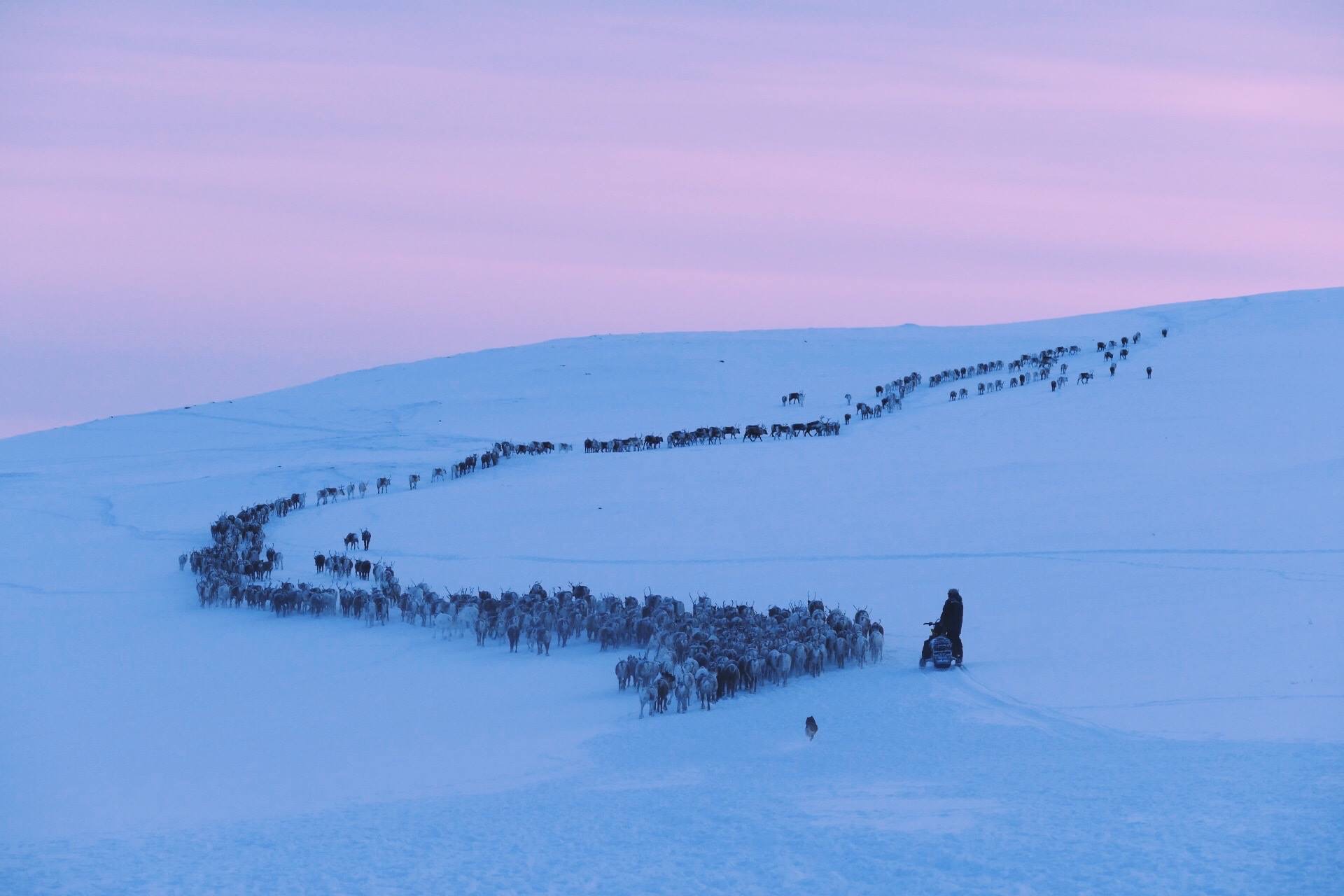
There is ice inside my collar. A biting cold that makes you feel cold to the bone. I put my gloves back on after securing my hat against the harsh mountain wind and I’m pleased that this is only my workplace for a few weeks. It is the reindeer herder’s workplace every day, no matter how cold or bad the weather gets. Ola prizes off the side panel on the scooter, which has clocked up almost 30,000 kilometers. There seems to be something wrong again, but I can’t even begin to guess what, so I gaze out over the white expanse of Vindelfjällen as he knocks his Sami knife against what I assume is the starter motor. The wind whips my face and the snowstorm’s every snowflake feels like a needle piercing my skin. When he finally gets the scooter started, we are able to drive the 60 km to the reindeer along with the other scooters. This is when the work really begins.
...
“JAHKI II LEAT JAGI VIELLJA” One year is not the other’s brother / no two years are ever the same
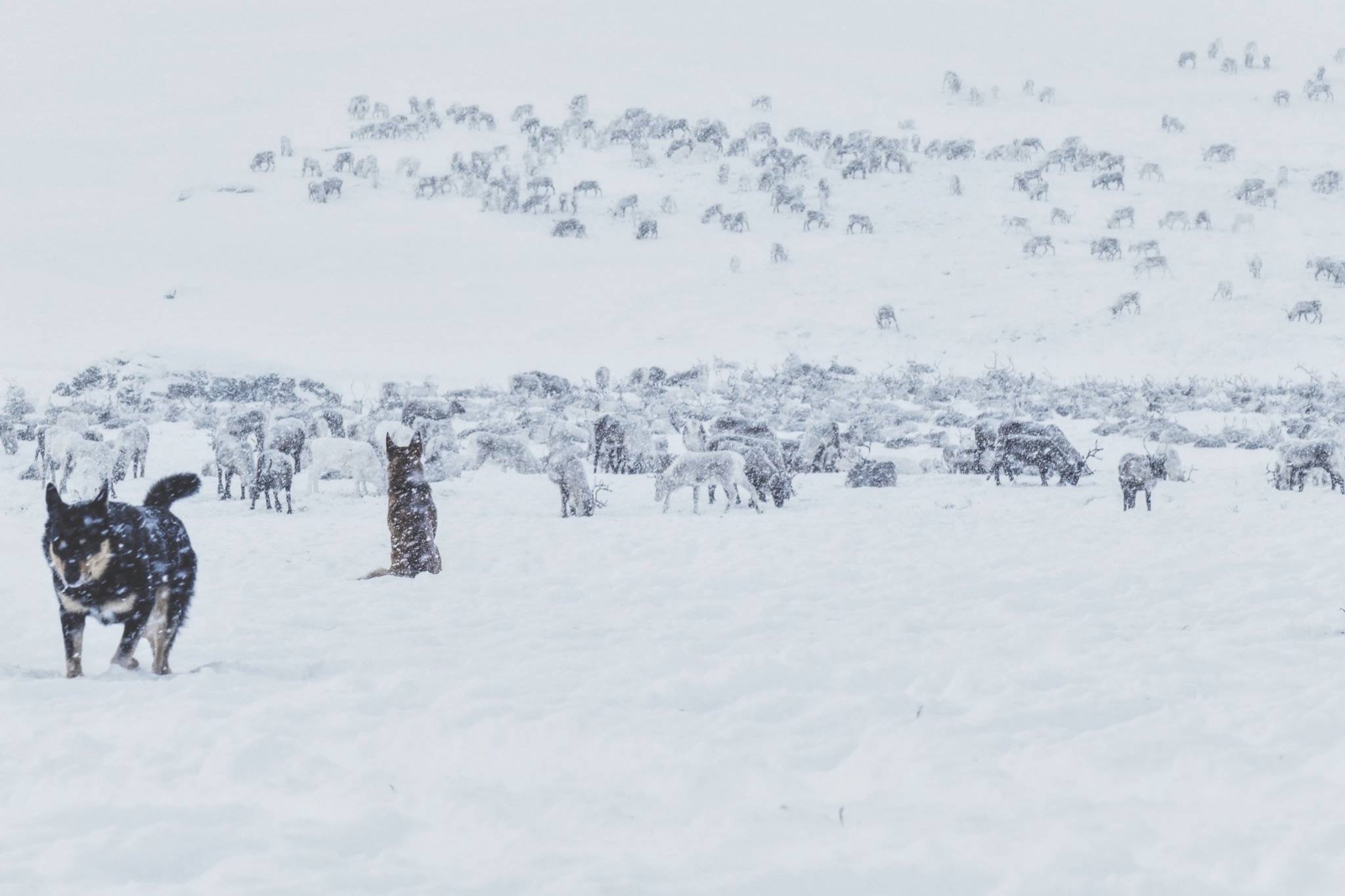
“It’s going to be a long day, just so you know,” he says and I am aware that they may need to guard the reindeer around the clock for a while to avoid losing them in the forest. It is November and the reindeer herders are rounding up the herd to take down to the separation enclosure, where each family/winter group will pull out their reindeer to take to winter pasture.
A winter group in the siida/community of Grans Sameby may consist of two reindeer herders and their reindeer. This year, my winter group is heading for the pasture at Slipstensjön; last year they were in Sorsele because the grazing down towards the coast was so bad, and they had to top up the feed with hay and pellets. It is more common now for the winters to turn out like this, due to the effects of shrinking pastures, forestry, mining and climate change. Supplemental feeding has become a necessary evil over the winter. In the past, there were so many old lichen-rich forests to take reindeer to when the usual fodder was locked away beneath a layer of ice. This extra feeding is not sustainable in the long run, but if there is not enough to graze on, or if there is a bad winter, reindeer herders have no choice but to feed their herd. If it rains in the middle of winter, with changeable weather and long periods above freezing, the ice settles like a blanket over the reindeer’s food, locking it away.
No two days are the same. Following the reindeer across the seasons is a given for the reindeer herder, who is passionate about his animals. Living a life with animals can be incredibly demanding, but also very rewarding when all the hard work pays off.
When I decided to write about a year in the life of this reindeer herder, I asked him what his favorite month was, and he immediately replied “November”, which baffles me, as I know it is one of the harsh, dark winter months in the forest pasture. November is his favorite month because he gets to see the herd in good shape before the long winter, when most days are spent setting and holding a perimeter around his reindeer. In November he is close to the herd day and night. “A reindeer grazing in the mountains is the best thing ever, when the animal is at its strongest and finest,” he says, his eyes lighting up.
For the reindeer herder, it has become a habit not to have any days off in the winter and the long working hours are getting longer and longer. Some nights it is necessary to monitor the reindeer at night to avoid losing control of the herd.
“A reindeer grazing in the mountains in November is the best thing ever, when the animal is at its strongest”
The reward for all the hard work, the reward for the long winter and the tough days of labor. She looks at him with her friendly eyes, the wise cow that always leads the way. She always comes to him first. This year, she has had a lovely, healthy calf, a “lamskogirját”, spotted with large, contrasting flecks. He runs his hand through the calf’s soft fur and whispers to her “you’re home now”. The scent of summer sweeps in on the mountain breeze. A new beginning, a new year.
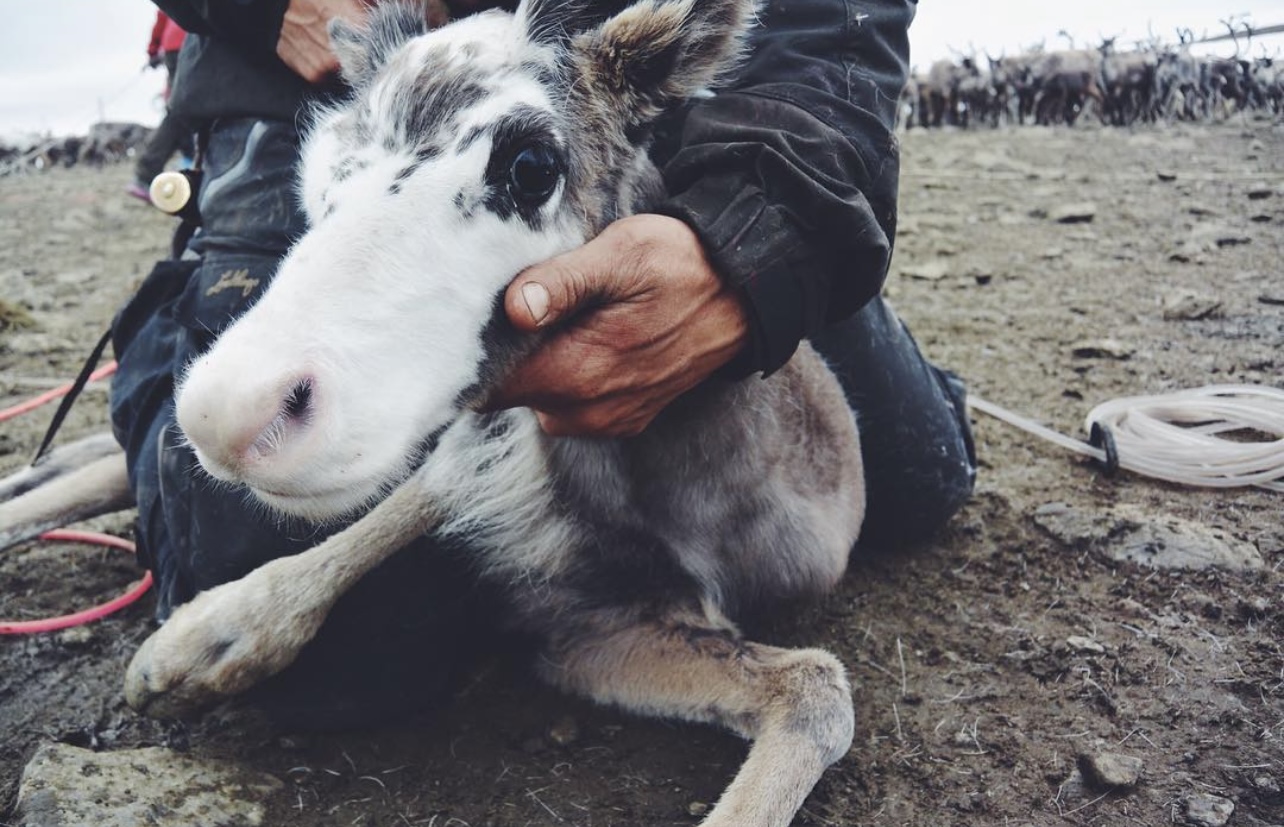
...
giđđa, giđđageassi
MAY–JUNE, THE CALVES ARE BORN
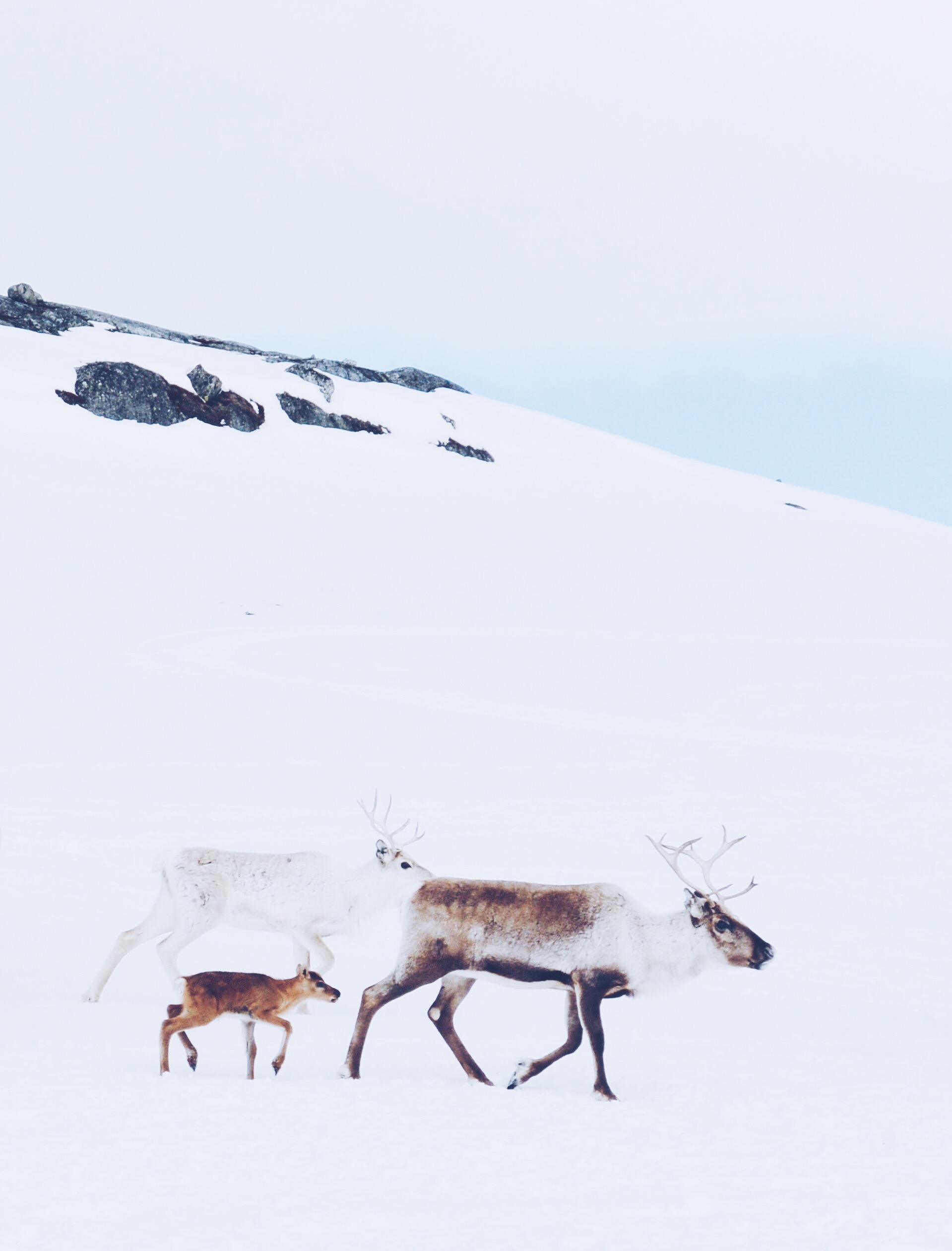
The reindeer herding year starts again in May with the calving season. The days are milder, the snow is melting and the grazing is good. The reindeer cows usually return to the area they were born to give birth to their own calves. A cow is pregnant for about 225 days, and a calf is able to stand up, suckle and follow its mother soon after birth. The reindeer herders stay nearby to guard the reindeer herd during this very sensitive time. Disturbances from predators or scooter traffic can lead to the abandonment and death of the calf. The cow needs peace and quiet in order to take care of her calf.
The reindeer graze in early summer in birch forests, valleys and wetlands where the pasture is lush. Good grazing is important for reindeer to recover from the winter. The calves suckle initially, but soon graze on grass and grow quickly.
...
geassi, čakčageassi
JULY–AUGUST, CALF MARKING & SUMMER PASTURE
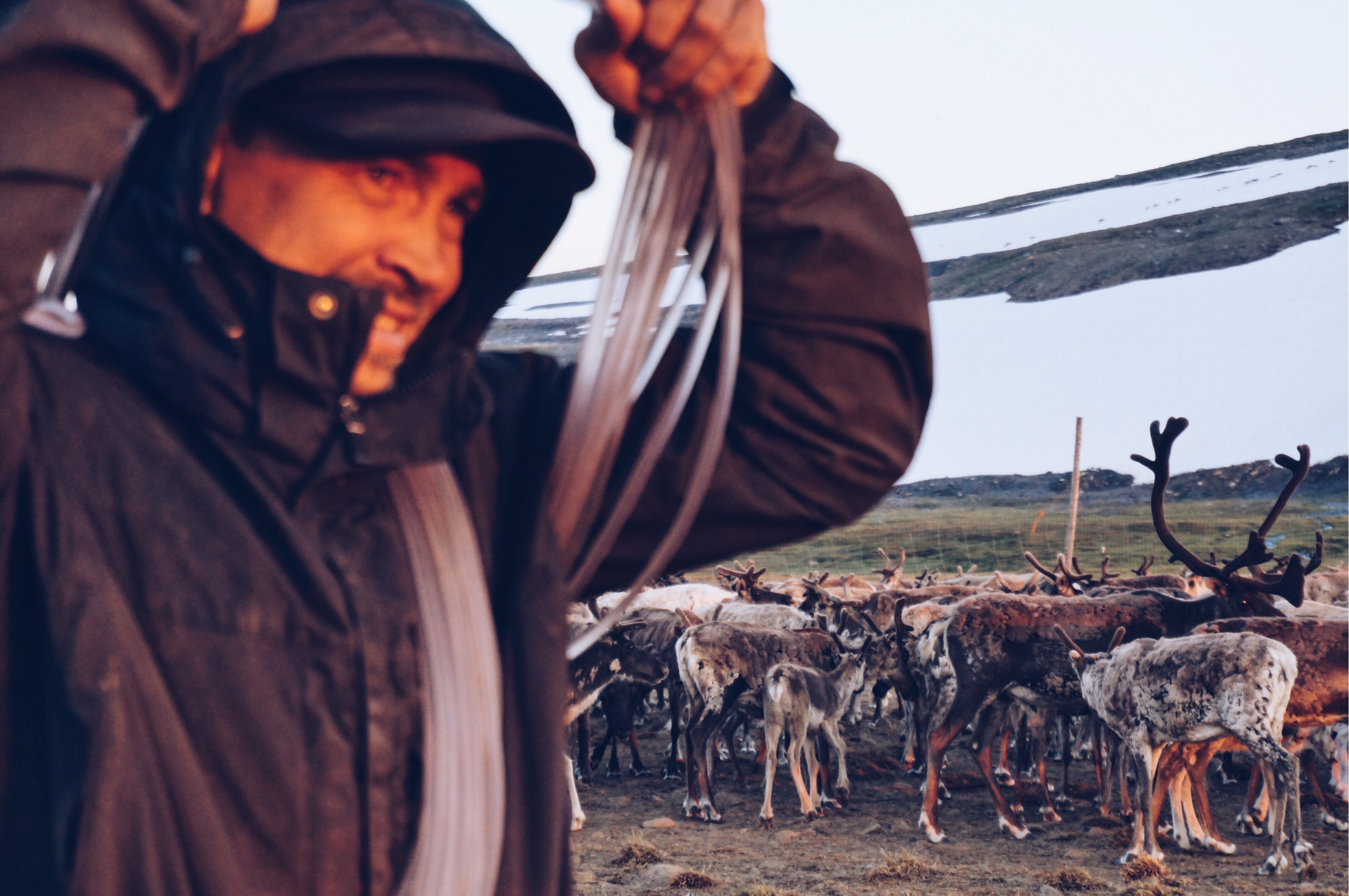
The mosquitoes and the heat drive the reindeer westwards. After Midsummer, it’s time to bring the herd together for the calf marking. The family and many relatives accompany the reindeer herders to their summer pasture. It is a popular event in the reindeer herding calendar. It’s light around the clock and the reindeer set the daily rhythm. Several times during the calf-marking period, the reindeer are gathered together using dogs and off-road vehicles and driven to one of the siida’s nearby enclosures. The calf marking usually takes place at night. It is light thanks to the midnight sun and cooler than during the day, which reduces the stress on the reindeer. After 6–8 hours, the herd has to be released to graze and rest. Every reindeer is owned by someone. A unique ear tag shows who the owner is. Each calf is marked with the same tag as the mother, to show that the calf also belongs to the same owner. After the last calf marking of the summer, the reindeer are allowed to graze freely and fatten themselves up for the autumn and slaughter.
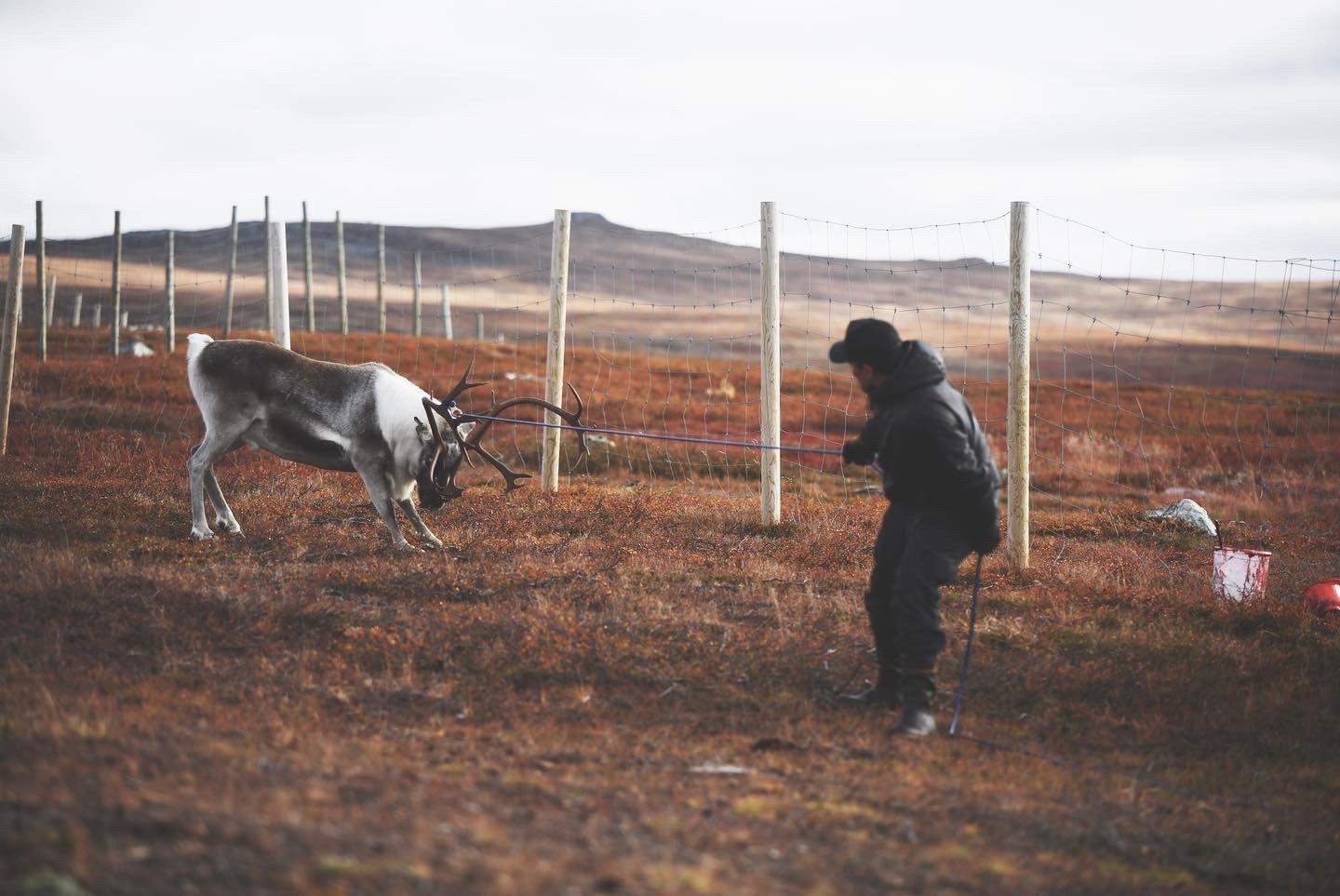
...
čakča
SEPTEMBER, BULL SLAUGHTER
At the beginning of September, the reindeer herders have to gather all the reindeer again for the bull slaughter. The reindeer herd is driven to the slaughter enclosure at Björkfjäll. By this time, the bulls have grown significantly and are ready for slaughter, before the rutting season begins. Most of a reindeer herder’s annual income comes from the sale of meat in connection with the cull. The bull slaughter is a tough job. Systematically going through the entire reindeer herd, the large bulls are caught and pulled away to the slaughter area. Slaughterhouses and vets are on hand to check and inspect the reindeer. Some of the meat will become food for the reindeer herding family for the rest of the year. It is taken for granted that the children can see where the meat comes from.
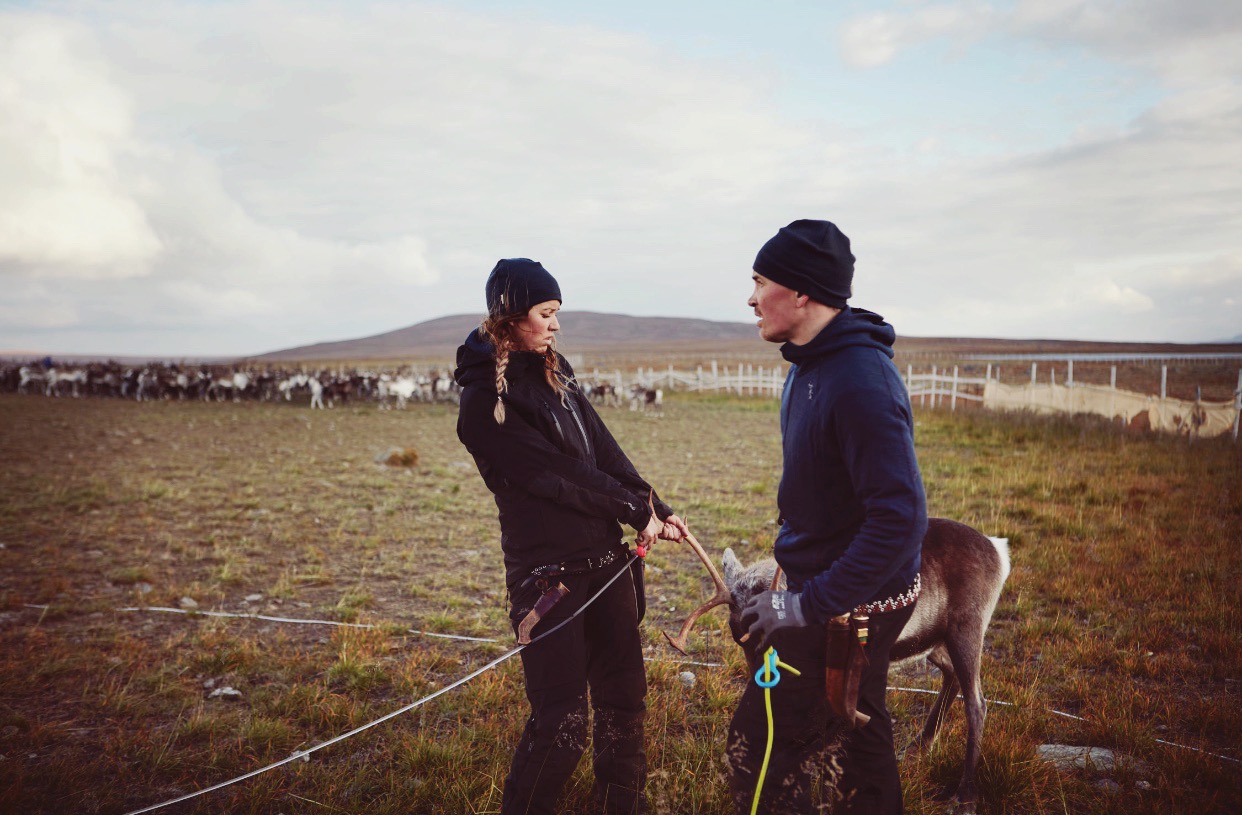
...
čakčadálvi
OCTOBER, DRIVING & AUTUMN GATHERING
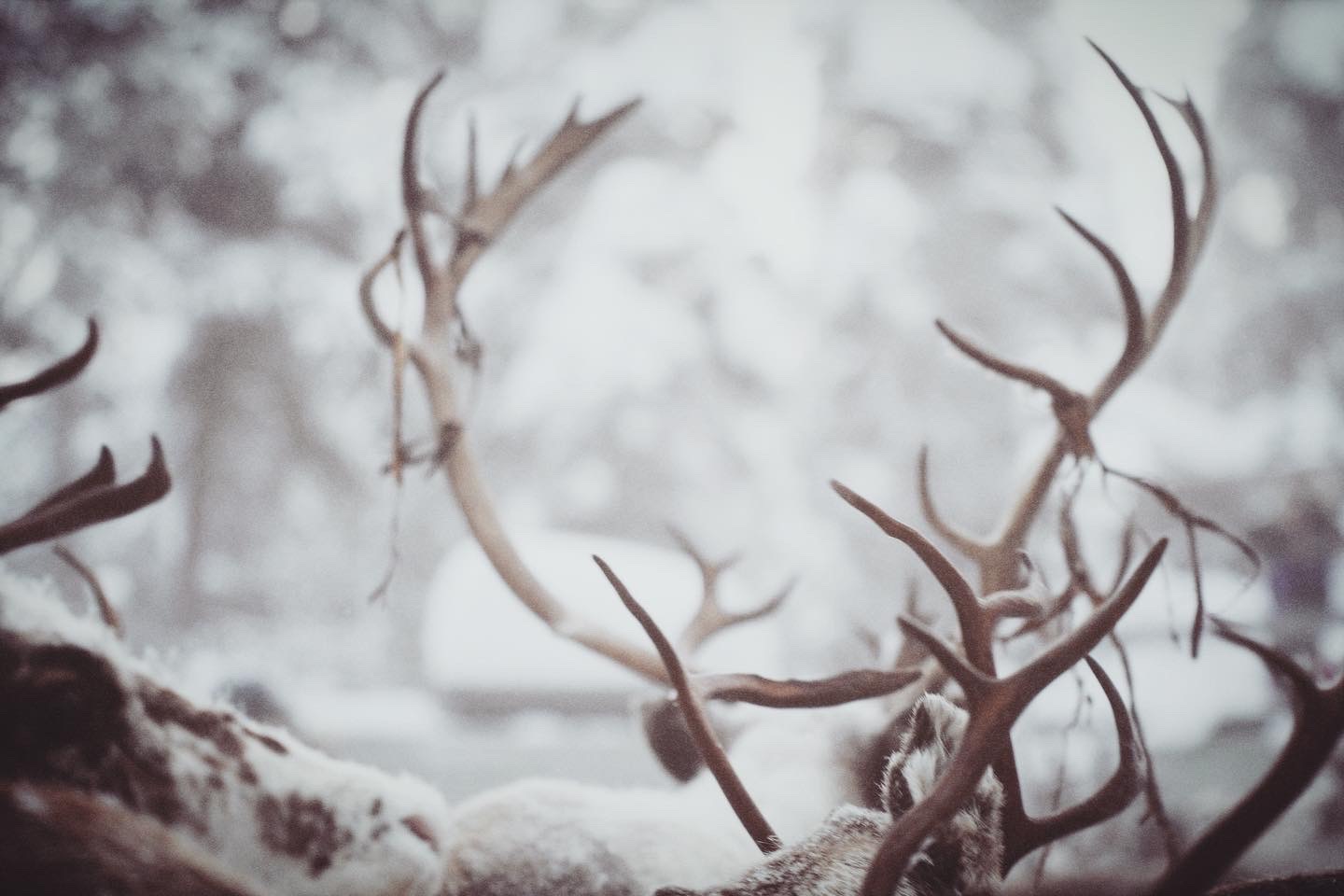
At the end of autumn, the siida’s entire reindeer herd is gathered together and then divided into smaller winter grazing groups. The pasture is much less abundant when the snow settles. As soon as the snow falls, the reindeer herders start to patrol the edges of the herd and then collect up the reindeer. The separations start during the period October–December. The winter is long and demanding. A wet winter with snow that melts and freezes gives a thick ice cover on the ground that “locks away” the reindeer fodder. In a good winter, the reindeer have no problem accessing food. A good winter for grazing is dry and cold, and the snow cover must not be too deep, as reindeer then expend more energy digging down to the ground.
...
čakčadálvi
NOVEMBER, DRIVING & SEPARATION
Each reindeer herder sorts their reindeer out of the herd and moves them to the winter grazing area. This takes several days. If the natural migration routes are destroyed by roads, clearfelling, mines and hydropower reservoirs, the reindeer must be transported down by truck. Over and over again, the main enclosure is filled with reindeer, which are then separated out into different pens. A separation enclosure looks like a flower with petals. At dusk, the generator is started and the lamps light up. The days are short now, but the work still has to be finished. When the village’s entire herd has been divided into smaller herds, the move to winter pasture can begin.
The winter grazing areas of the mountain siida are located in the forested lowlands. The forest siida and concession siida always keep their reindeer in the forest. Forest reindeer are also moved between different places depending on the season and grazing conditions.
...
dálvi,giđđadálvi
DECEMBER–APRIL, WINTER GRAZING IN THE FOREST
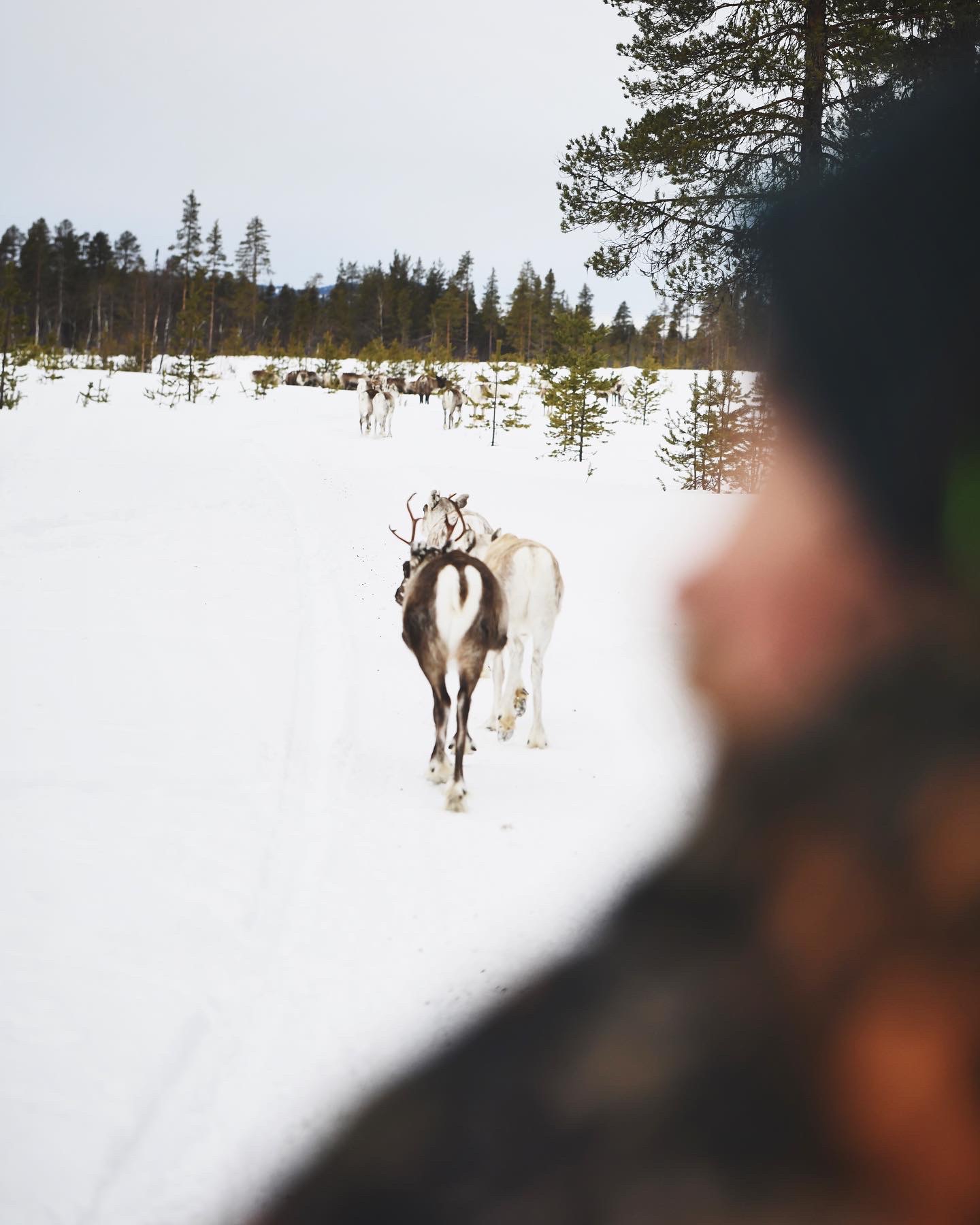
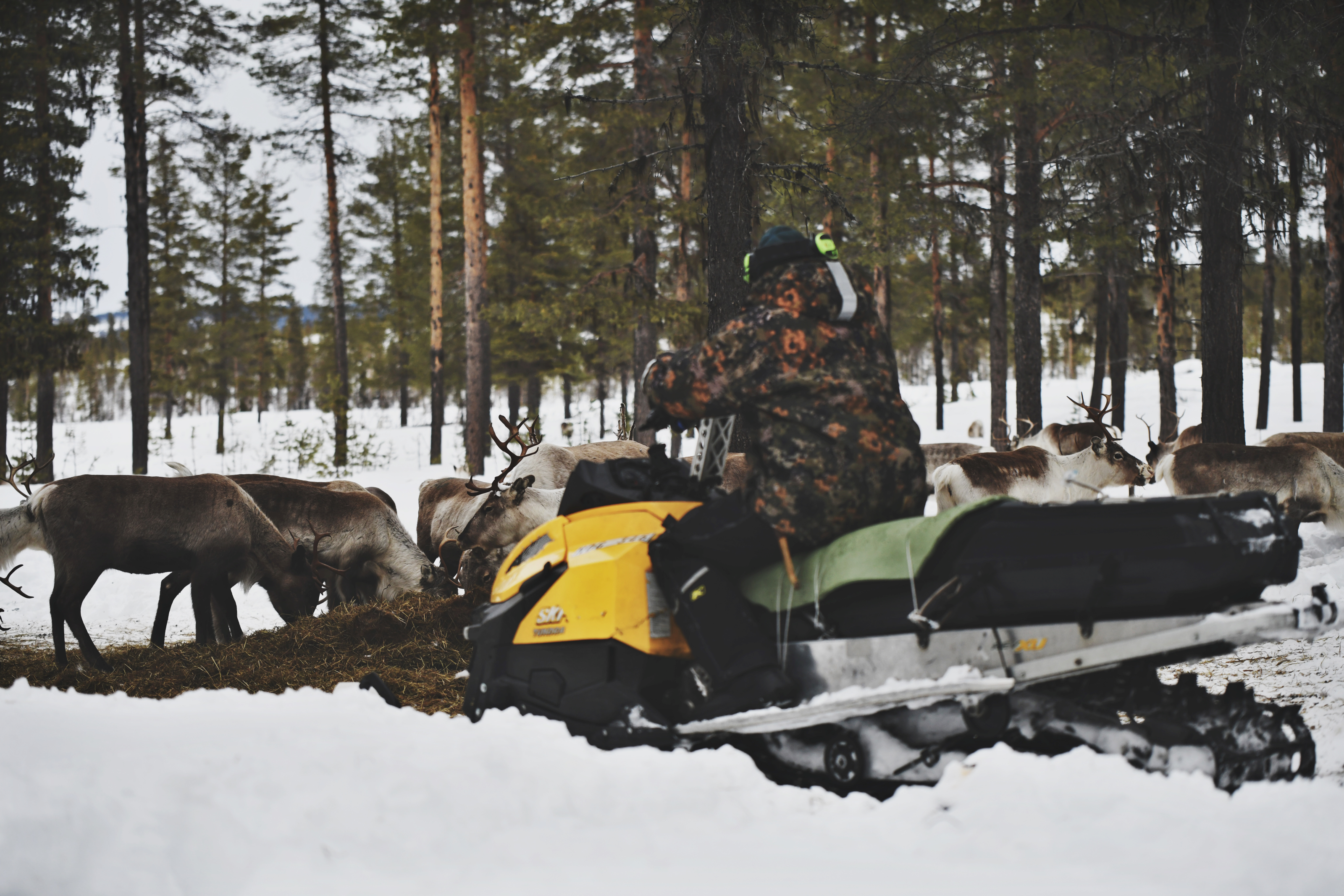
Winter is the most critical season of the reindeer herding year. Good winter grazing is essential for the reindeer’s survival. If the pasture is not sufficient, the reindeer must be supported with pellets and hay. When the reindeer stop digging in the snow and start wandering around, this means that they cannot reach the lichen under the snow cover. When they become too tired to dig, the reindeer have to be moved to other land or given supplemental feed. Lichen-rich forests, which previously acted as back-up grazing, are decreasing in number due to forestry and environmental degradation. The reindeer herders check the perimeter every day, riding their snow scooters around the reindeer in the forest to make sure the herd is where it should be and relocate it when the pasture has been dug up and exhausted. The reindeer herders also protect the animals from predators.
...
giđđadálvi, giđđa
APRIL–MAY, SPRING MIGRATION
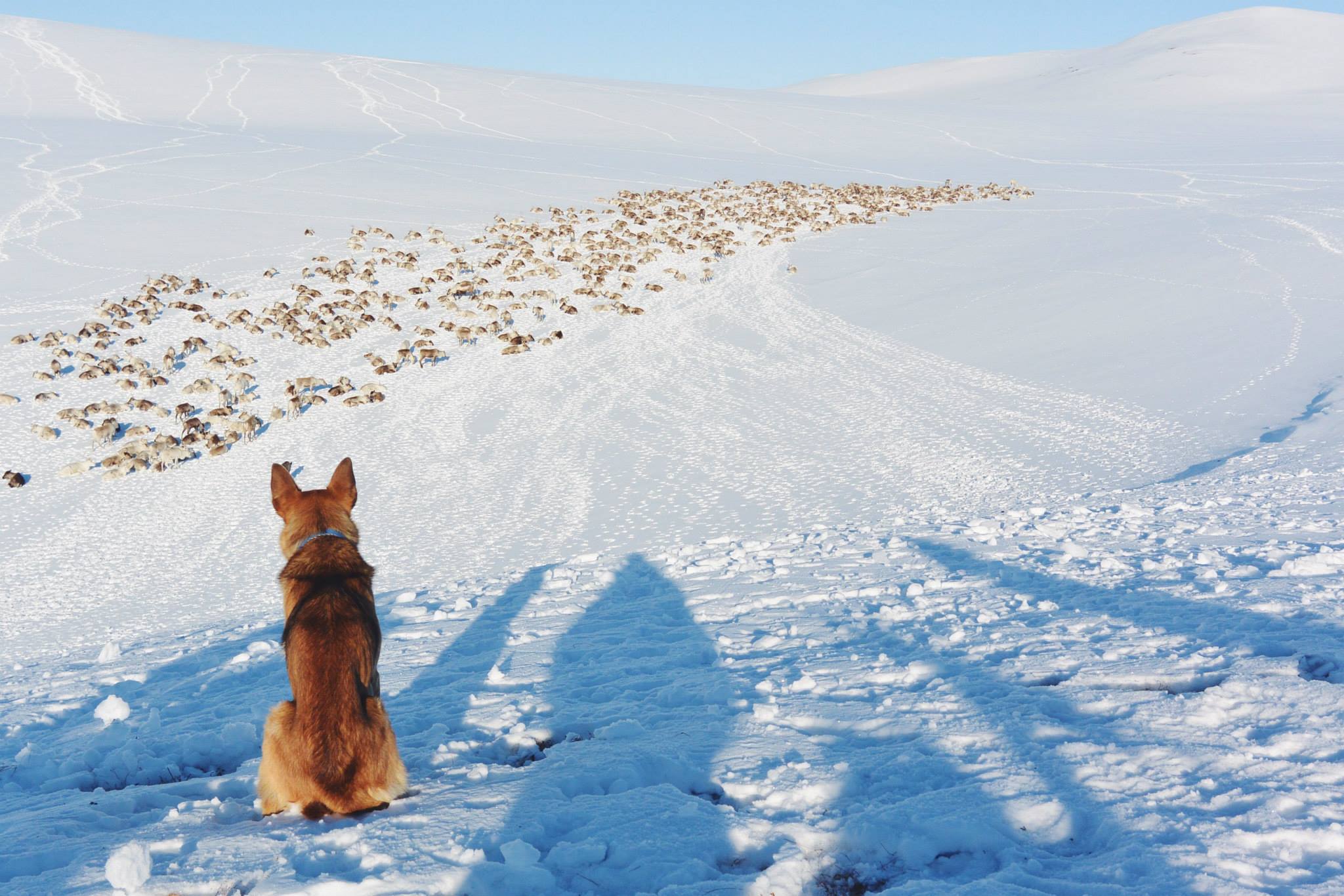
At the end of April, the reindeer can be moved back up to the mountains. The long spring migration of 360 km is demanding for the reindeer, reindeer herders and dogs alike. The reindeer herders move the herd 10–30 kilometers a day, with the migration tailored to the strength and well-being of the reindeer. Each night there is a stop at an enclosure where the reindeer are shut in overnight and given hay and pellets, ready for the next leg of the move from the forest to the mountains. Pregnant cows must be protected when they reach the mountain as they can “lose” their calves if they become stressed. This is why there need to be scooter-free areas in the mountains during this sensitive period. As they emerge from the treeline and come across exposed patches of fresh spring grazing on the southern slopes, the reindeer taken on new momentum and vigor. The reindeer herder can breathe out a little – winter is over and he can look forward to new calves and a new reindeer herding year.
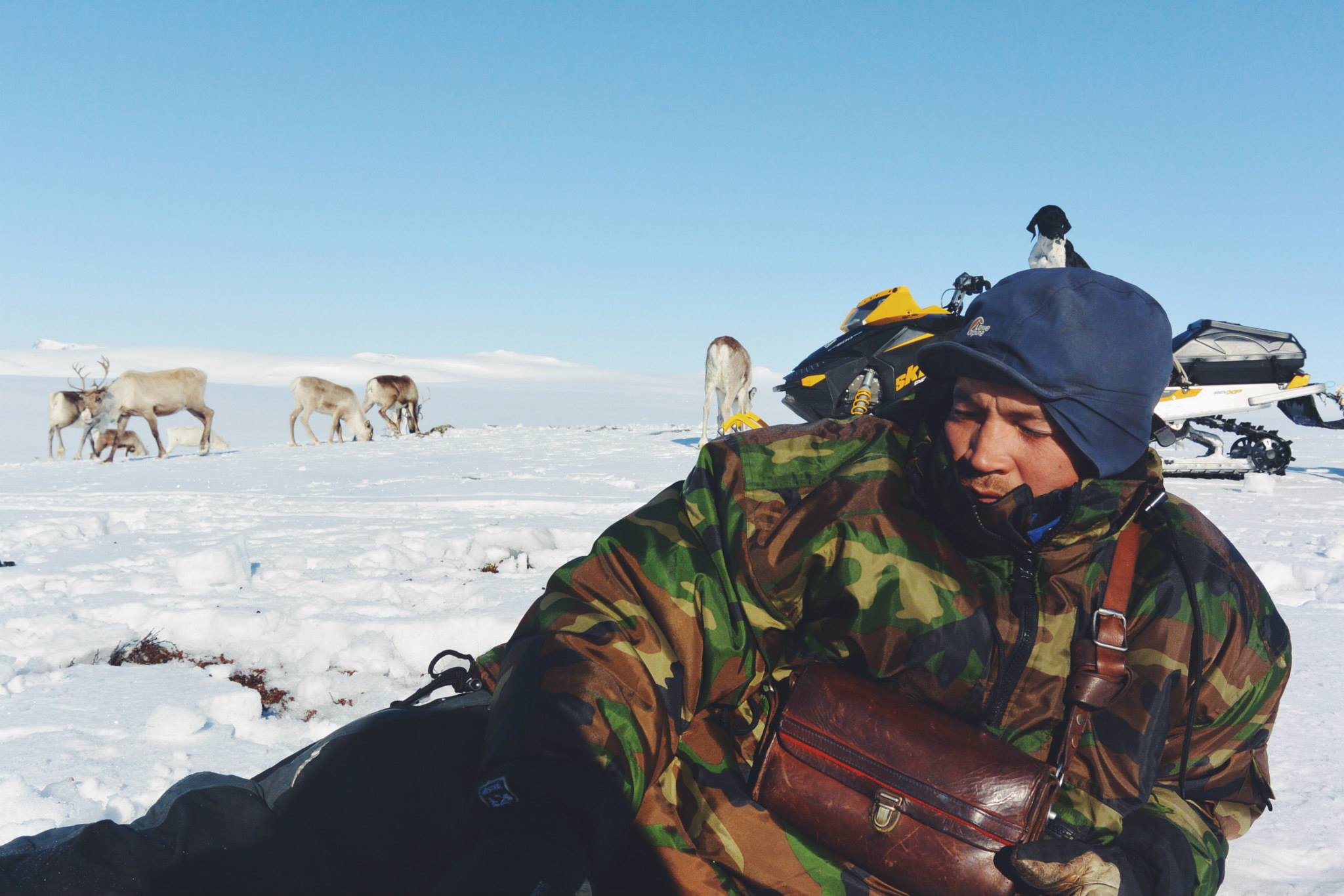
Read more about Eva Bromée here!

